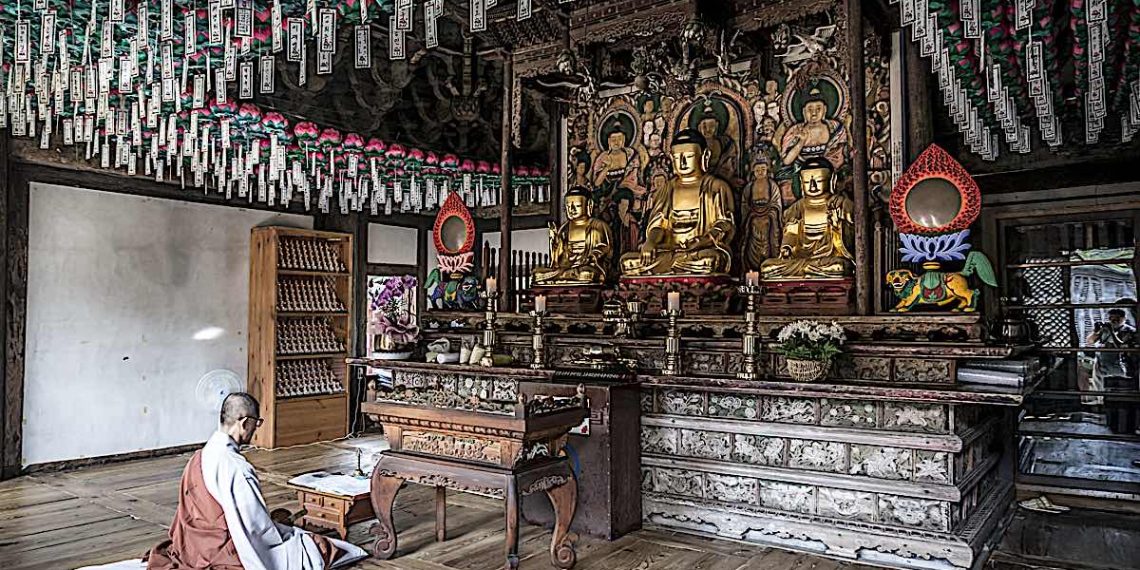The resonating sound of the Korean moktak is iconic of the beautiful practices of Korean Buddhism. Although the wooden Moktak is similar to the Mokugyo Japanese fish drum — there are subtle differences, just as there are subtle differences between Korean Seon and Japanese Zen. Korean Buddhism is normally identified with Seon (Korean word for “Zen) — but, there’s much more to it than a language change — and there’s much more to it than the rhythm of the moktak. [For a feature on the “wooden fish drum” practices, see>>]
One of the joys of Buddhism is its inclusive cultural diversity — especially for happy “spiritual adventurers.” All traditions of Buddhism are wondrous and profound, and exploring each tradition, in turn, can be an amazing “third-eye” opening spiritual adventure. Many Buddhist spiritual adventurers benefit from learning from each of the venerable traditions of Buddhism.
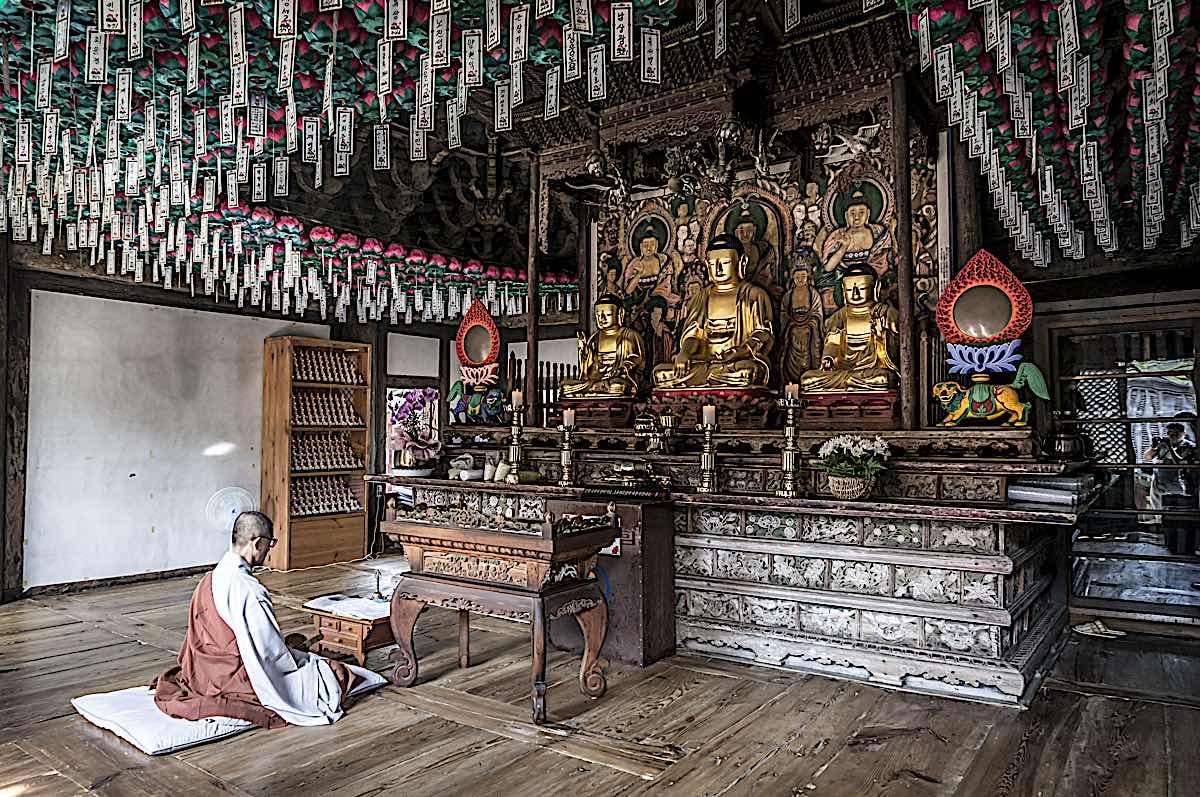
All of these many traditions of Buddhism — each with unique practices and approaches — share a common goal and core practices to help practitioners achieve liberation from suffering. And while the path to this goal may vary, the core teachings of Buddhism remain the same. In this feature, we explore the serene and wonderful world of Korean Buddhism — specifically Seon Buddhism (Korean Zen Buddhism) and its six core practices. [See the lovely embedded YouTube video below “Invitation to Korean Buddhism”]
Like other traditions — such as Tibetan Vajrayana Buddhism or Japanese Zen — Korean Buddhism is intimately linked to the history and culture of Korea, and has, in turn, influenced many aspects of Korean life. Korean Buddhism thrives today and is one of the world’s most vibrant and vital Buddhist communities. Seon (Zen) is the dominant form of Buddhism in Korea, and the focus of this feature.
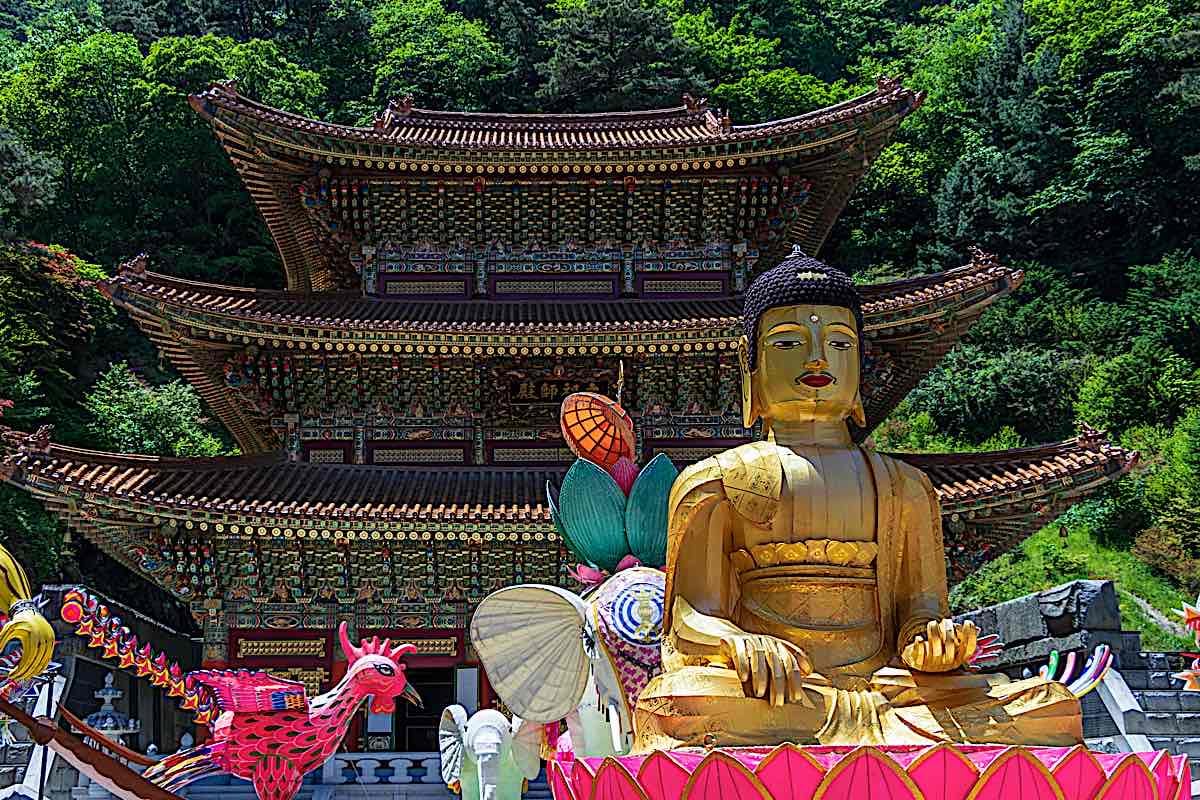
Read on to learn more about the key practices of Korean and Seon Buddhism. We start with a little history — since the culture and history and tightly bound up in the practices — but feel free to skip ahead to “Six Seon Buddhist Practices Today.” The six key practices include:
- Seon meditation: similar to Zazen in Zen
- Prostrations practice
- Yeombul — recitation of the Buddha’s name
- Mantra practice
- Sutra recitation practice
- Sutra hand transcription (and publishing or dissemination) practice.
We cover these and other practices in the section “Seon Buddhism Practices Today” below.
Invitation to Korean Buddhism video:
Buddhism in The Three Kingdoms
Korean Buddhism traces its origins back to the 3rd century CE during the time of the Three Kingdoms. At this time, Korea was divided into three separate kingdoms: Goguryeo in the north, Baekje in the southwest, and Silla in the southeast. [1]
It was during this period that Buddhism first solidified its roots on Korean shores. Buddhist monks from China and India traveled to Korea, bringing sacred texts and Buddhist art. These monks helped establish the first Korean Buddhist temples, quickly becoming places of learning and worship. Over time, more and more people began to embrace Buddhism, and it slowly began to take root in Korean society.
In this next section, we’ll take a closer look at each of the three kingdoms to see how Buddhism flourished in each one.
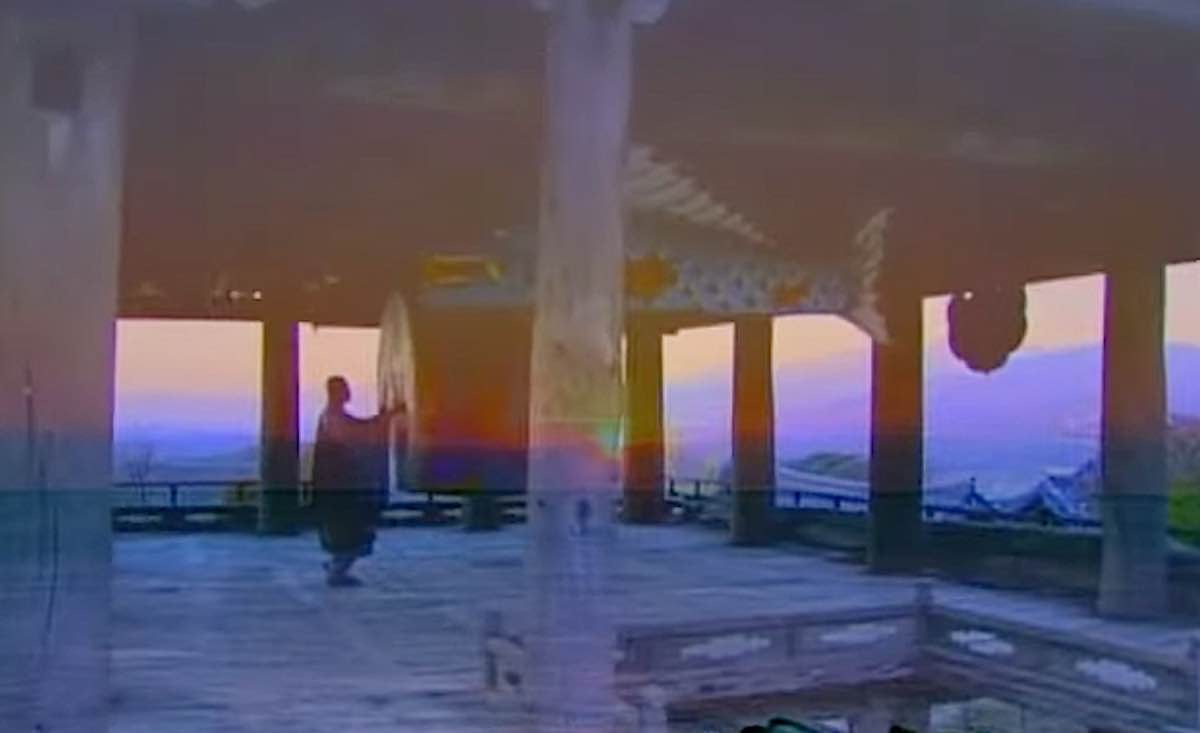
Goguryeo (North Kingdom)
Goguryeo was the first of the Three Kingdoms to adopt Buddhism. In 372 CE, the King of Goguryeo, King Sosurim, sent envoys to China to learn more about this new religion. At that time, Korean Buddhism was mainly focused around the concept of cause and effect.
Cause and effect, covered under the bigger topic of karma, is the belief that our actions have consequences. This means that if we do good deeds, we will experience good results in the future. Similarly, if we do bad deeds, we will experience negative consequences.
This philosophy deeply resonated with King Sosurim, and he quickly began to spread Buddhism throughout his kingdom. Under his rule, Goguryeo became a center of Buddhist learning, and many of the first Korean monks were trained here.
During this time, Goguryeo also became known for its stunning Buddhist art. Beautiful temples and statues were erected all over the kingdom, making it a veritable paradise for Buddhist pilgrims.
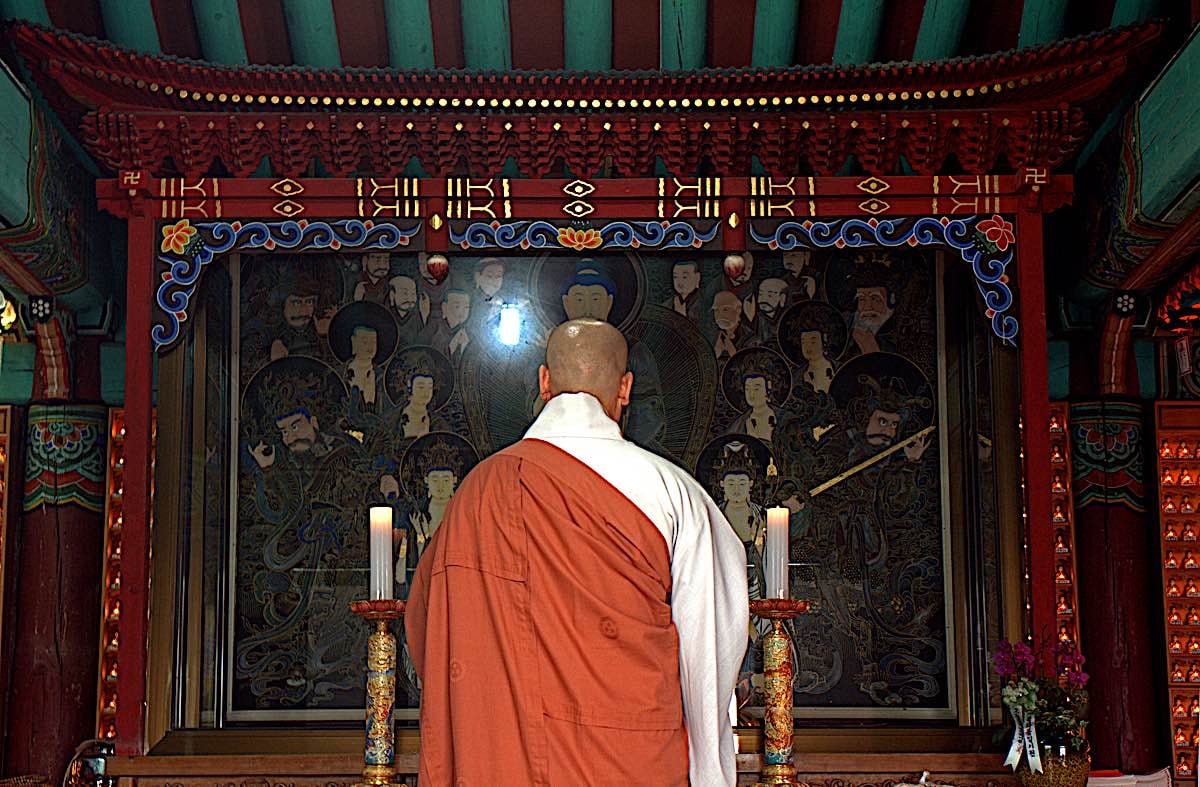
Baekje (Southwest Kingdom)
Buddhism arrived in Baekje in 384 CE, brought over by monks from Goguryeo. The same basic principles of karma and the search for happiness were taught in Baekje, but with a few unique twists. One of the most notable variances was the emphasis on rebirth. In Buddhism, it is believed that we are constantly reborn into different lifetimes. This cycle of birth and death is known as samsara, brought on by the heavy Indian influence on Baekje Buddhism.
Indian Buddhist teachings state that we are reborn into different lifetimes based on our karma. We will be reborn into a higher life form if we have good karma. However, if we have bad karma, we will be reborn into a lower life form. This philosophy was adopted by the people of Baekje, and it quickly became a central part of their Buddhist beliefs. Under the rule of King Asin, Baekje became a powerful kingdom, rivaling even the mighty Goguryeo.
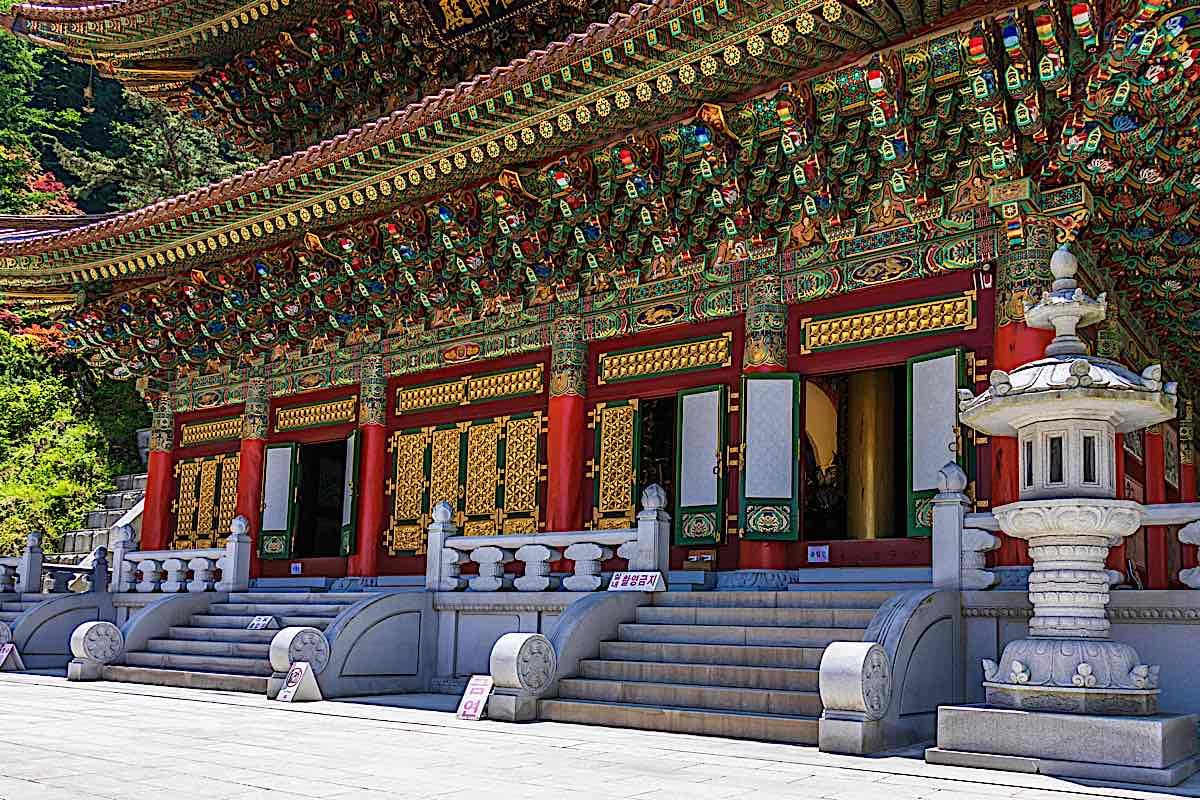
Silla (Southeast Kingdom)
Buddhism arrived in Silla in the year 527 CE, brought over by monks from Baekje. By this time, Buddhism was well-established in Korea, and the people of Silla were quick to embrace it. However, it was not always smooth sailing.
During the early years of Silla Buddhism, there was often conflict between Buddhist monks and the native shamanism practices.
However, when King Jinheung came to power, things began to change. King Jinheung was a strong supporter of Buddhism and did everything he could to promote and protect it. Under his rule, Silla became a major center of Buddhist learning, and many of the most famous Korean monks were trained here.
The King went to China to learn more about Buddhism and to learn how to better practice it himself. He also sent many monks to study in China, which helped to spread Buddhist teachings even further.
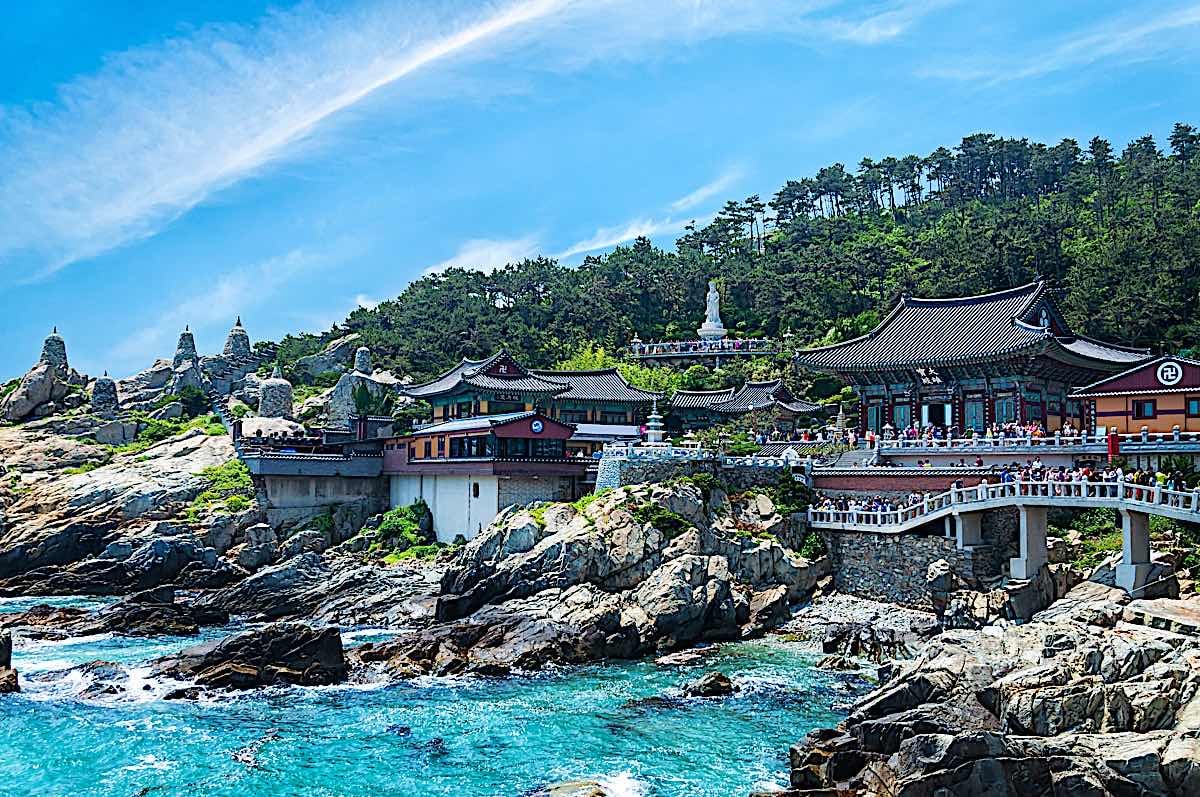
Defining Seon Buddhism
These three early kingdoms lay the foundations for what would become the Seon lineage of Korean Buddhism. Seon is the Korean word for Chan, a type of Mahayana Buddhism that originated in China. You might also know it by its Japanese name, Zen. All these terms refer to the same thing.
Seon Buddhism emphasizes direct experience over scriptural study. This means that instead of reading Buddhist texts and trying to understand them intellectually, Seon practitioners believe that the best way to learn about Buddhism is to experience it directly.
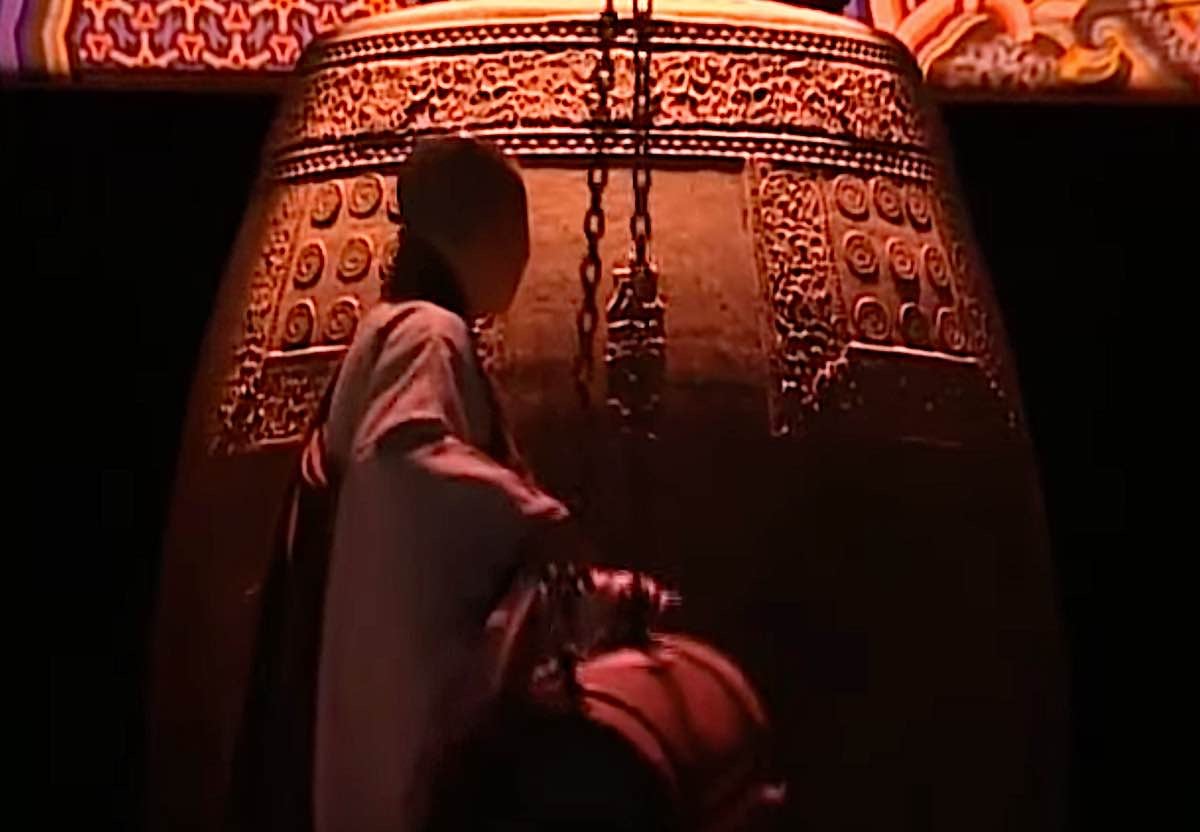
This is achieved mainly through meditation, which is thought to help practitioners reach a state of enlightenment or nirvana. Once someone has reached this state, they are thought to be free from the cycle of birth and death, and they can finally find true peace and happiness. More on this later.
Seon Buddhism arrived in Korea during the Goryeo dynasty, and it quickly became the dominant form of Buddhism practiced in the country. In fact, it became the official state religion of Goryeo. It is believed that a Chinese student of Daoxin named Beomnang was the first to bring Seon Buddhism to Korea. From here, Seon Buddhism began to spread throughout the country, eventually becoming the dominant form of Buddhism practiced in Korea.
Many Korean Buddhists took a trip to China to study Seon Buddhism in more depth. They would return to Korea and teach what they had learned to their fellow practitioners. It helped to ensure that the Seon tradition was kept alive in Korea and allowed some Chinese influences to enter into the Korean Seon tradition.
The Nine Schools
When these monks returned from China, they often brought with them different interpretations of Seon Buddhism. These different interpretations eventually led to the nine Seon Buddhism schools in Korea.
These nine schools were headquartered on mountains around the country, and each had their own distinct methods of teaching and practicing Seon Buddhism. Peaceful co-existence between the schools was the norm, although heated debates were not unheard of.
The nine schools are:
- The Gaji san school
- The Seongju san school
- The Silsangsan school
- The Huiyang san school
- The Bongnim san school
- The Dongni san school
- The Sagul san school
- The Saja san school
- The Sumi san school
Of these nine schools, all except the last (Sumi san) come from the lineage of Mazu Daoyo, an influential Chinese monk who established his school of Chan Buddhism during the Tang dynasty. His teachings emphasize Buddha nature, which is the belief that all sentient beings have the potential to achieve Buddhahood.
He also practiced zazen, a type of meditation involving sitting in the lotus position and focusing on one’s breath. It is still a common form of meditation practiced by Seon Buddhists today. Finally, he is known for shock therapy, a method of teaching in which the teacher says or does something shocking or unexpected to jolt the student into a state of enlightenment.
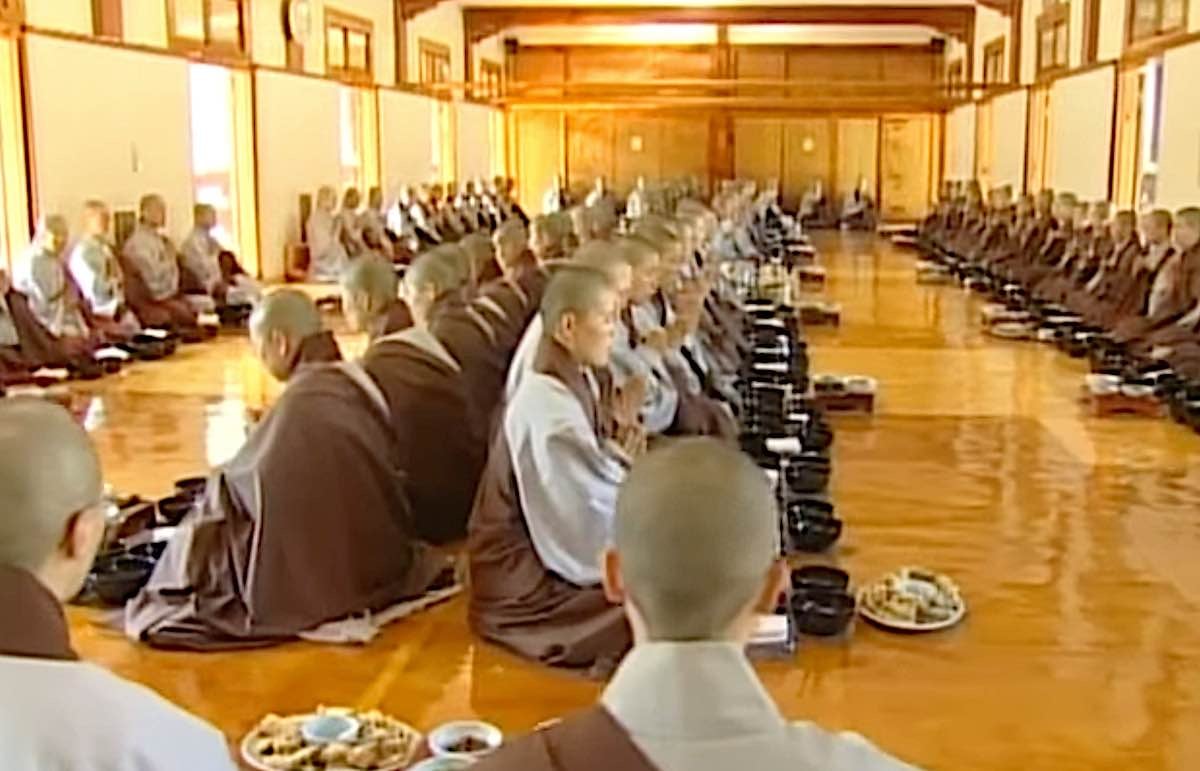
This practice might involve shouting or even hitting the student (when they lose alertness). While this might sound unconventional, it is based on the belief that the student’s ego is getting in the way of their enlightenment and that the only way to break through this barrier is with a sudden shock.
On the other hand, the Sumi san school comes from the Caodong school lineage. A more contemporary school, it places emphasis on sitting meditation and silent illumination.
Seon Buddhism Practices Today
Korean Buddhism is virtually synonymous with Seon Buddhism, as it is the dominant form of Buddhism practiced in the country. As such, there are many different Seon Buddhist practices that Koreans follow. Seon Buddhism takes a holistic approach to enlightenment, encompassing the body, mind, and spirit. [2]
Meditation
The practice of meditation is very important to Seon Buddhists. In fact, it is considered to be the keystone of the path. There are many different types of meditation that Seon Buddhists practice, but the most common is zazen.
Zazen is a form of meditation that involves sitting in the lotus position and focusing on one’s breath. The aim is to clear the mind of all thoughts and to achieve a state of pure awareness. Seon Buddhists believe that it is through meditation that we can come to understand our true nature and achieve enlightenment. Beginners who find the full lotus position uncomfortable can sit in the half lotus, Burmese, or seiza position instead.
Another common form of meditation practiced by Seon Buddhists is called silent illumination. This is a form of meditation in which the practitioner lets go of all thoughts and allows themselves to be at one with the universe. There is no focus on the breath or on any particular object. The aim is to achieve a state of pure consciousness.
Seon Buddhists believe that silent illumination is the highest form of meditation because it allows us to achieve complete oneness with the universe. Meditation in Seon stems directly from the teachings of Chan Buddhism.
Monasticism
Monasticism is another important aspect of Seon Buddhism — and Buddhism, generally. Monks and nuns play a vital role and are responsible for keeping the tradition alive. Seon monks and nuns live in monasteries, which are typically located on mountains or in secluded areas. They spend their days meditating, practicing yoga, and studying Buddhist texts.
Generally speaking, monastic life is extremely disciplined. Monks and nuns must follow a strict code of conduct, including celibacy, poverty, and obedience. In return for their dedication, monks and nuns can achieve a high level of spiritual attainment.
Seon Buddhists generally do not have many material possessions. They believe that attachment to worldly possessions is the cause of suffering, and so they try to live simply. Most Seon Buddhists are vegetarians, as they believe that killing animals is wrong. Seon monks typically wear simple robes, and they often shave their heads. This is a sign of humility and a way of letting go of attachment to their physical appearance.
Ganhwa Seon
The Korean term for phrase-observing meditation is “Ganhwa Seon.” The goal of Ganhwa Seon is to look deep inside one’s mind to find the source of all thoughts and emotions. This is done by observing the mind closely and seeing how thoughts arise and pass away. Using keywords or short phrases as a focus, practitioners aim to see the mind’s true nature. This can either be mindfulness-style practice, or topical, based on analytical meditation of a phrase or keyword.
Investigating keywords or phrases is a stimulating practice that helps to cut through the illusions our mind creates — and sees reality for what it truly is. In doing so, practitioners can develop a deeper understanding of their own minds and can ultimately achieve enlightenment.
We must be like a child who has not yet learned to discriminate. Here, we aim to leap over the ditch of conceptual thinking and attain a state where there is no longer any thought or doubt. It requires that we let go of all attachments, including attachments to the Dharma itself. Only then can we see things as they truly are.
Hwadu
This practice is considered advanced, yet easy to start as a practice. In Hwadu or Hua Tou, practitioners must concentrate on a phrase — similar to Koan riddles or phrases — repeating it over and over in their minds until it becomes second nature. In Korean Seon, “What is it?” is a popular Hwadu. Others include: “What is this?”, “Who is repeating the Buddha’s name?”, “Who am I?” and” “Who is dragging this corpse around?”
The practice extends beyond sitting meditation. It should be done throughout the day, whether walking, lying down, or even during conversations. The point is to keep the phrase at the forefront of the mind at all times so that it can be used as a tool for investigation. Once the phrase is understood, practitioners can move on to more advanced Hwadus.
Gong-an — What Would Buddha Do?
Translating to “public notice” or “case,” a gong-an is a story about the Buddha or one of his disciples. Seon Buddhists use these stories to help them investigate their Hwadus. When investigating a Hwadu, practitioners will often ask themselves, “What would the Buddha do in this situation?”
Gong-ans are usually stories about how the Buddha or his disciples attained enlightenment. They often involve a confrontation between the enlightened being and someone who is not yet enlightened. The point of the story is to show how the enlightened being responds to the situation.
For example, one popular gong-an is about a monk named Zhaozhou, a famous Zen master, who a fellow monk asked, “Does a dog have Buddha nature or not?” Zhaozhou’s response was simply, “Mu.” Mu means no, which is curious because the Buddha himself said that all beings have Buddha nature. Investigating this response in all its aspects is what leads practitioners to enlightenment.
There are hundreds of Gong-ans, which can be used repeatedly to help investigate the Hwadu.
Asceticism
In order to reach enlightenment, practitioners must first purify their minds and bodies. Asceticism is done through ascetic practices such as fasting, sleep deprivation, and self-flagellation. Ascetic practices are meant to help practitioners let go of attachment to the physical world and focus on their spiritual practice. By depriving themselves of physical comforts, practitioners can develop a deeper understanding of the mind-body connection and see that the two are not separate.
Ascetic practices are not easy and should only be undertaken with the guidance of a qualified teacher. They can be dangerous if not done properly, so it is important to make sure that you are ready before undertaking any of these practices. Moderation is key here – too much asceticism can lead to physical and mental harm, which is counter to the goal of purifying the mind.
Cave meditation
Seon Buddhists often retreat to mountain caves for periods of meditation. This is seen as a way to purify the mind and body and develop deeper concentration. Cave meditation is usually done in complete solitude, with no distractions from the outside world.
Cave meditation can be extremely difficult, both mentally and physically. The conditions are often harsh, and practitioners must be prepared for long periods of sitting without moving. But the rewards are great, and many practitioners find that cave meditation is one the best way to achieve enlightenment.
The sound of running water and the smell of incense help to clear the mind and create a sense of tranquility. Sitting in complete darkness, meditators benefit from the protection of mountain deities, who are said to live in the caves. As for chakras, symbolically, the root chakra is located at the base of the spine and is associated with the element of earth. It is said to be the chakra that anchors us to the physical world. [3]
By sitting on a cool stone inside a cave, meditators can purify their root chakra and develop a deeper connection to the earth. This is said to help practitioners let go of attachment to the physical world and focus on their spiritual practice. Also, the higher altitude of the cave helps to get closer to Cheon-ki, or the “heavenly realm.”
The popularity of Buddhism in Korea
Today, Seon Buddhism remains the most popular form of Buddhism in Korea. Roughly a quarter of the population identifies as Buddhist, and the majority of those Buddhists are Seon practitioners.
There are several reasons for the popularity of Seon Buddhism in Korea. First, it is seen as a more accessible form of Buddhism than other traditions. Seon Buddhism does not require adherence to strict rules or rituals, and it can be practiced even by atheists. That means that anyone, regardless of their belief system, can benefit from the practice. They can meditate without having to believe in a deity.
Second, Seon Buddhism emphasizes personal experience over doctrinal knowledge. This is appealing to many people who are looking for a spirituality that is not based on blind faith. Seon Buddhism does not require belief in any particular doctrine. Instead, practitioners are encouraged to investigate their own minds and experience enlightenment for themselves.
Finally, Seon Buddhism has a long and rich history in Korea. It was introduced to the peninsula many centuries ago, and it has been an important part of Korean culture ever since. Its popularity has only grown in recent years, as more and more people are looking for a spirituality that is not tied to any one spiritual path.
Seon Buddhism — Unique and Important
Seon Buddhism is a unique form of Buddhism that is well-suited to the modern world. It has slowly but surely been making its way to the West, and there are now Seon centers in cities across the globe. [4]
If you are looking for a spiritual practice that is accessible, experiential, and steeped in history, then Seon Buddhism may be a path for you.
- Authors Note: Did I make a mistake? Do you have a correction? Let us know through our contact form>>
Sources
[1] Korean Buddhism Wiki >>
[2] Korean Buddhism >>
[3] Seon Buddhism>>
[4] Korean Seon>>

